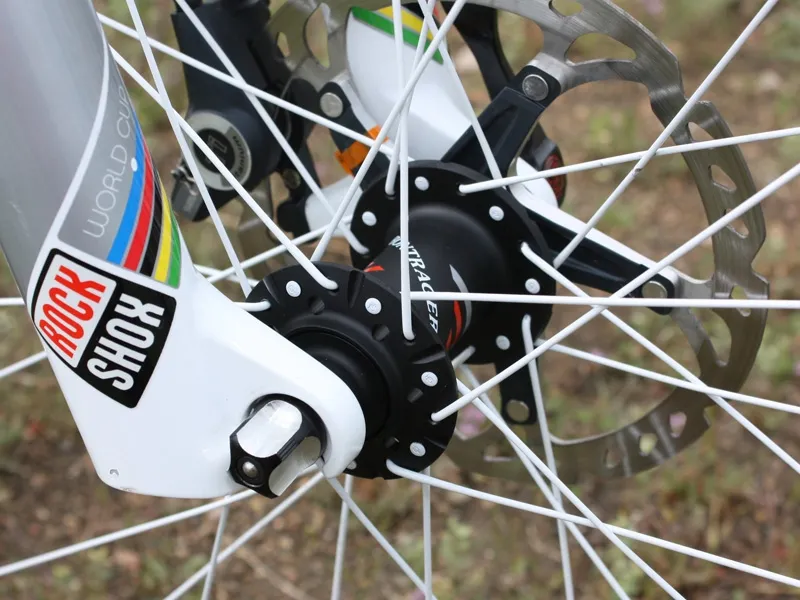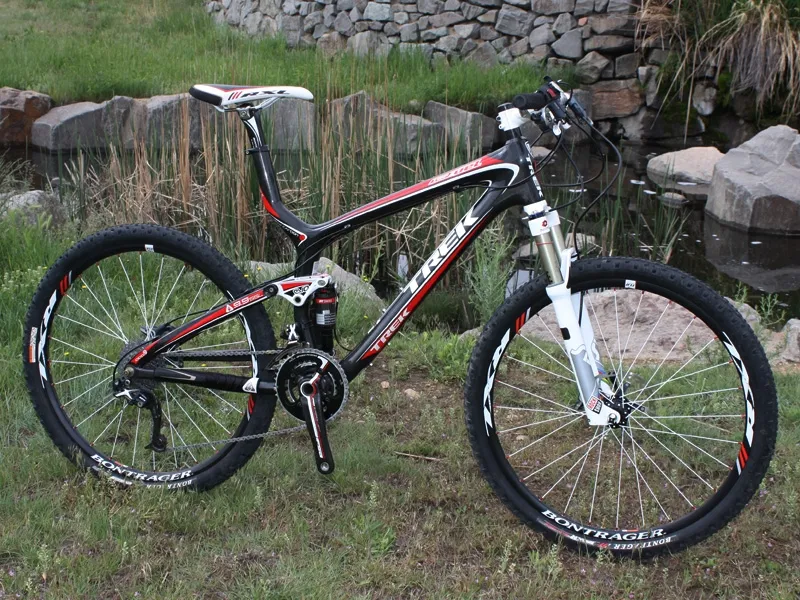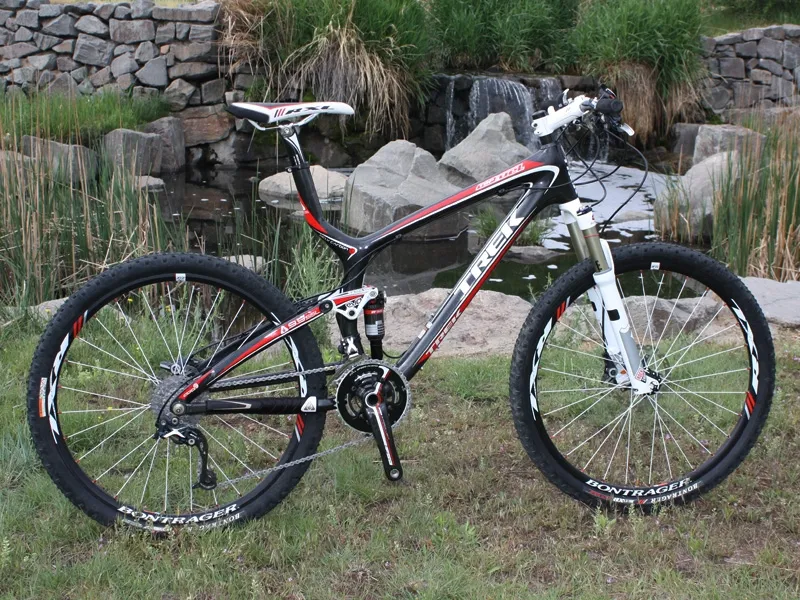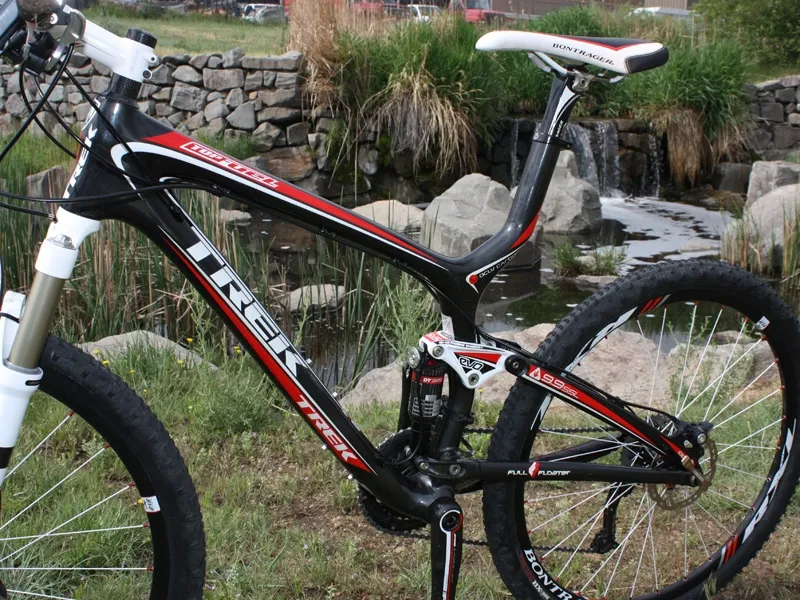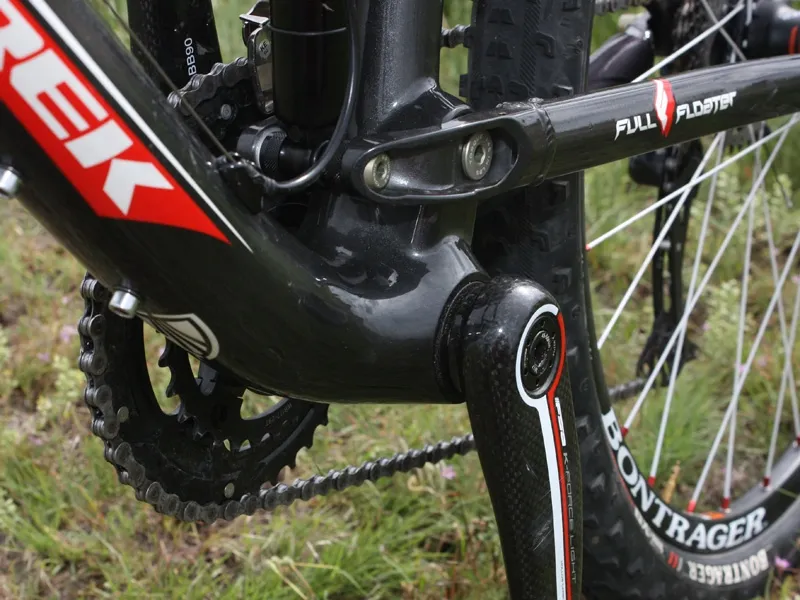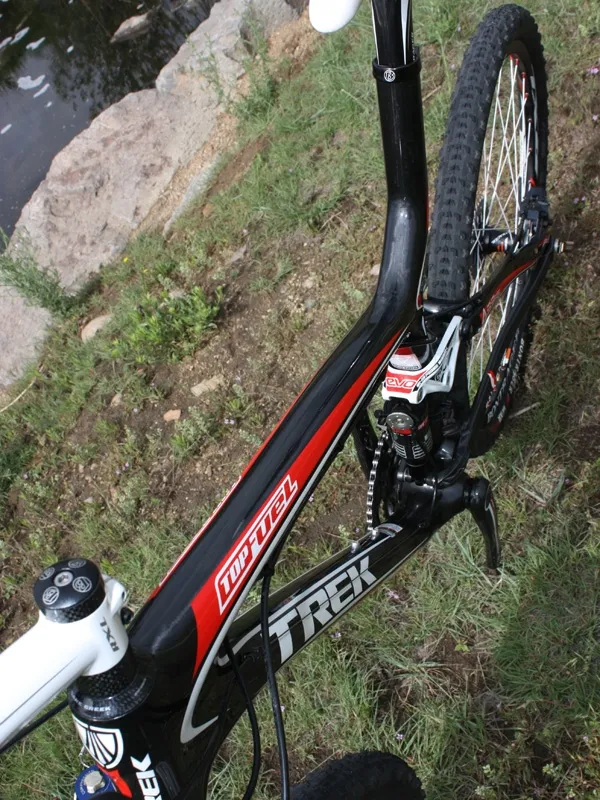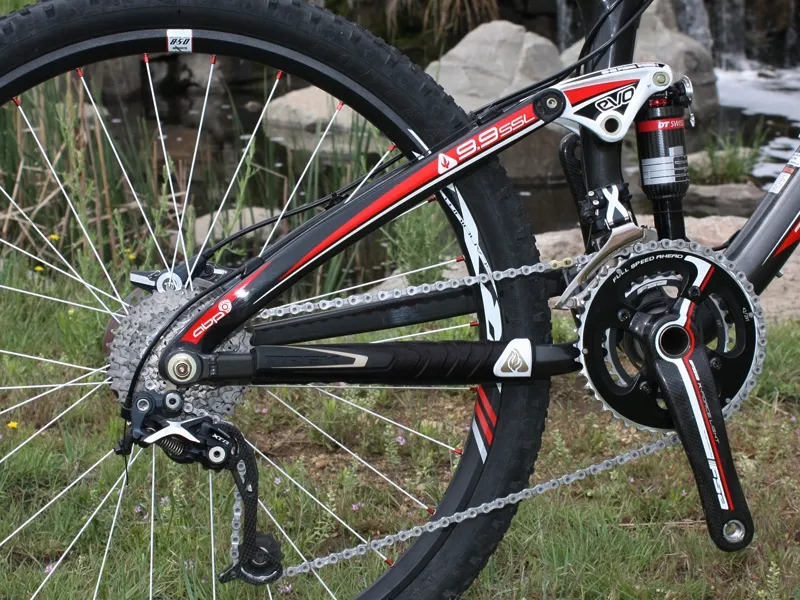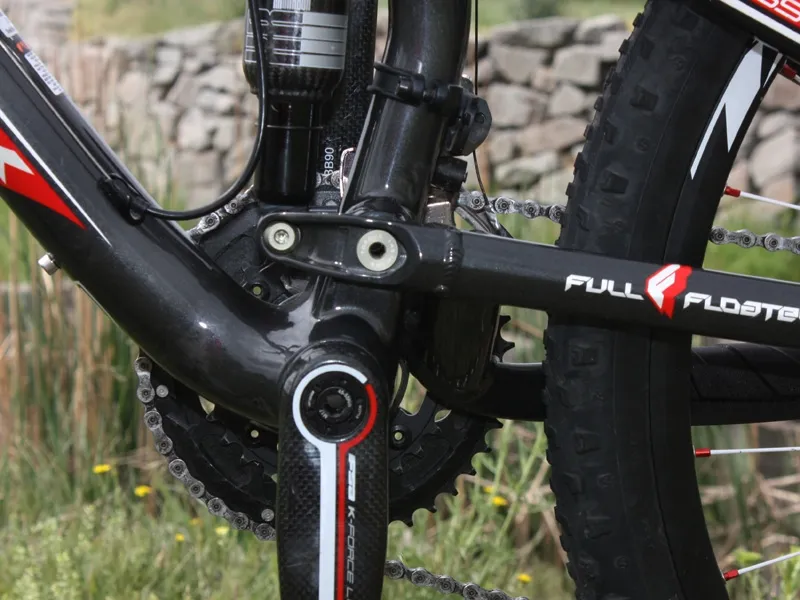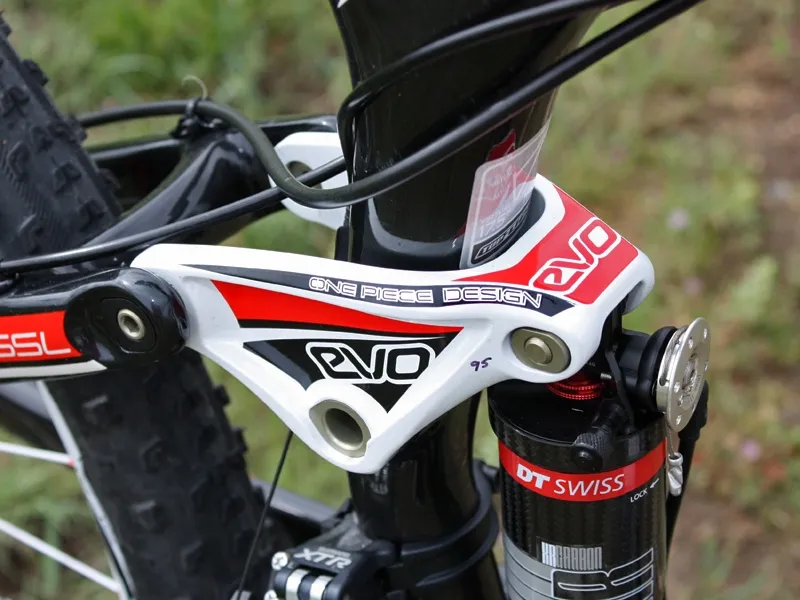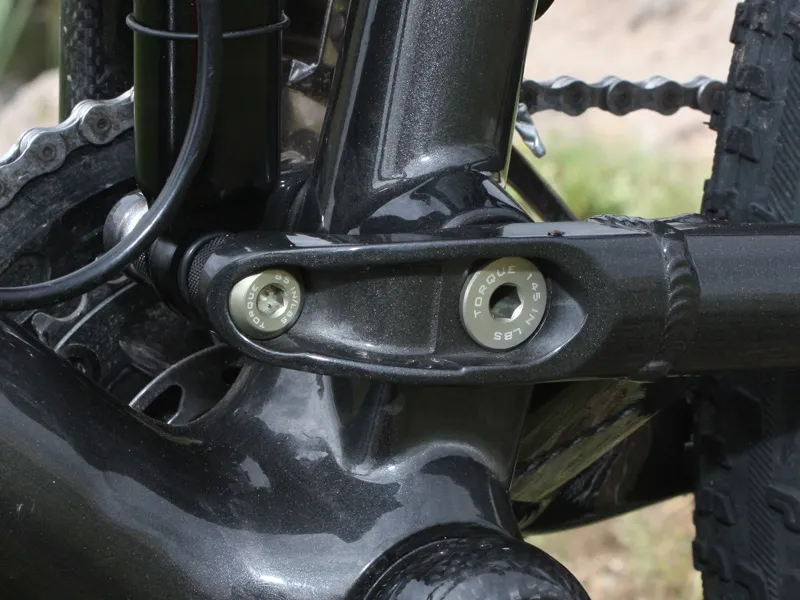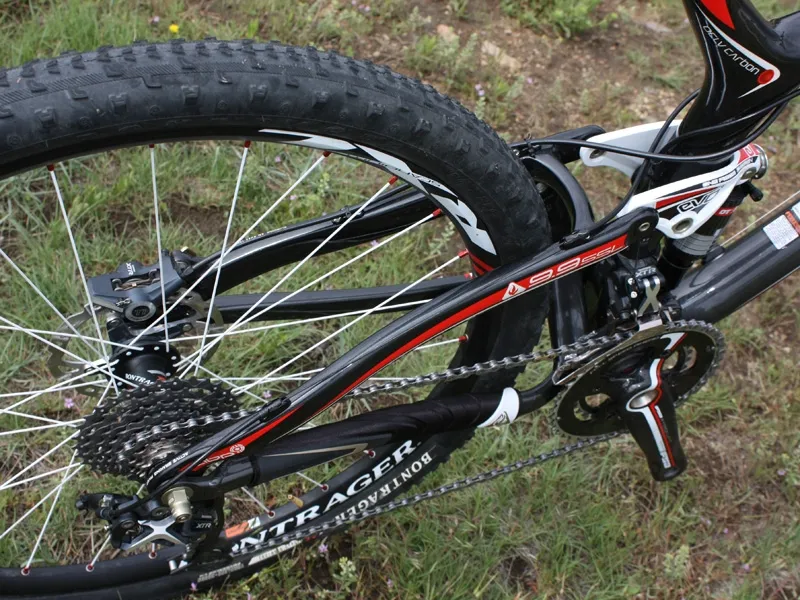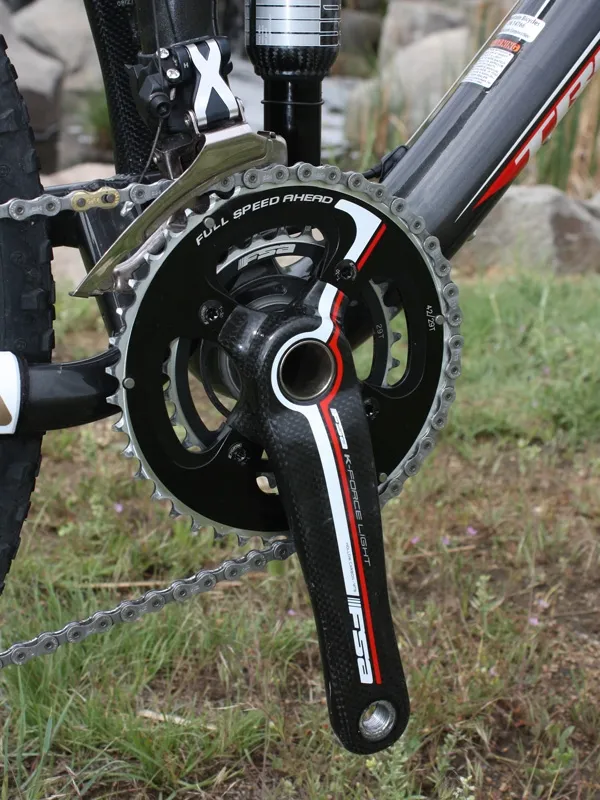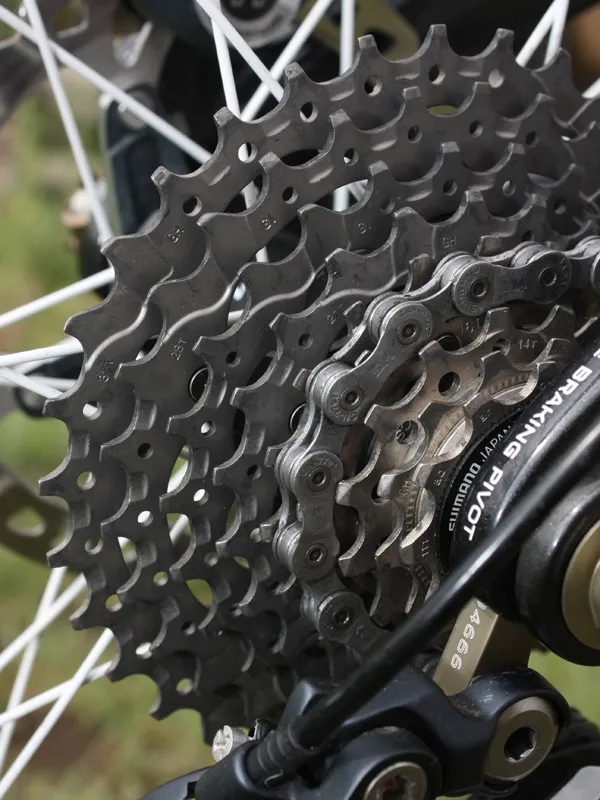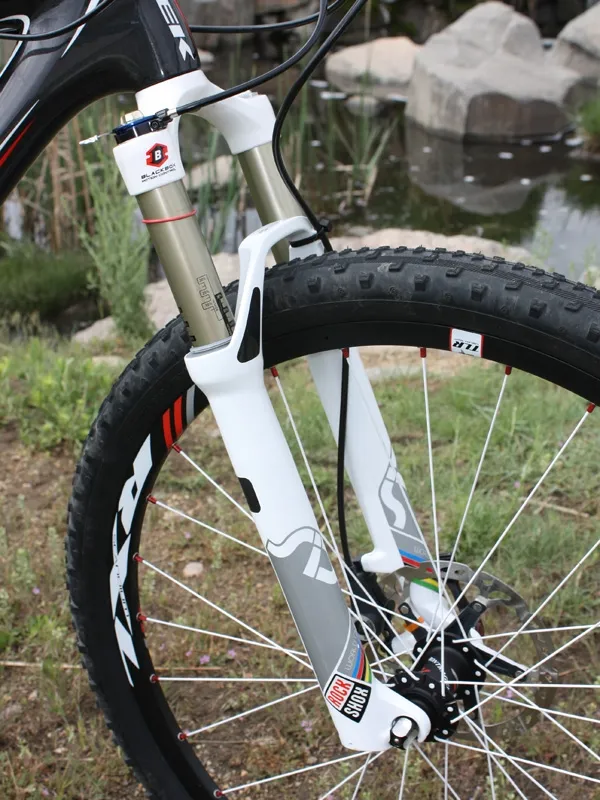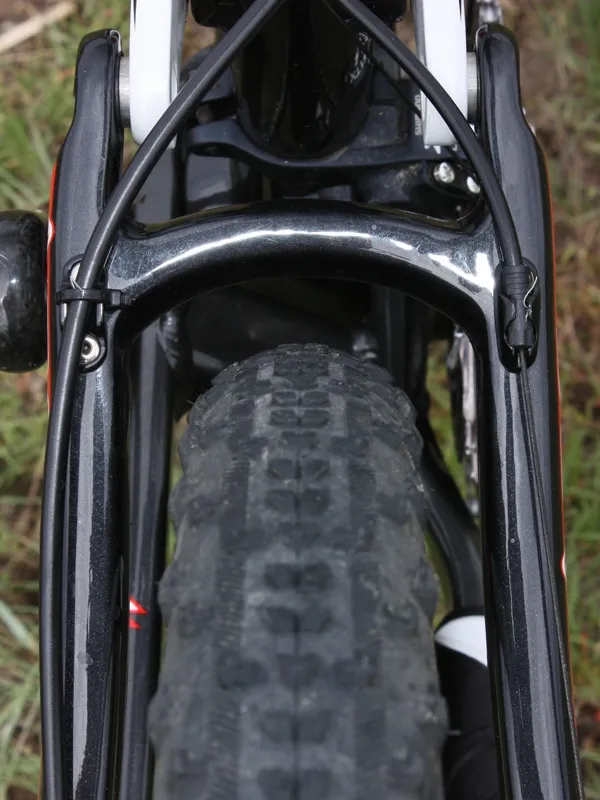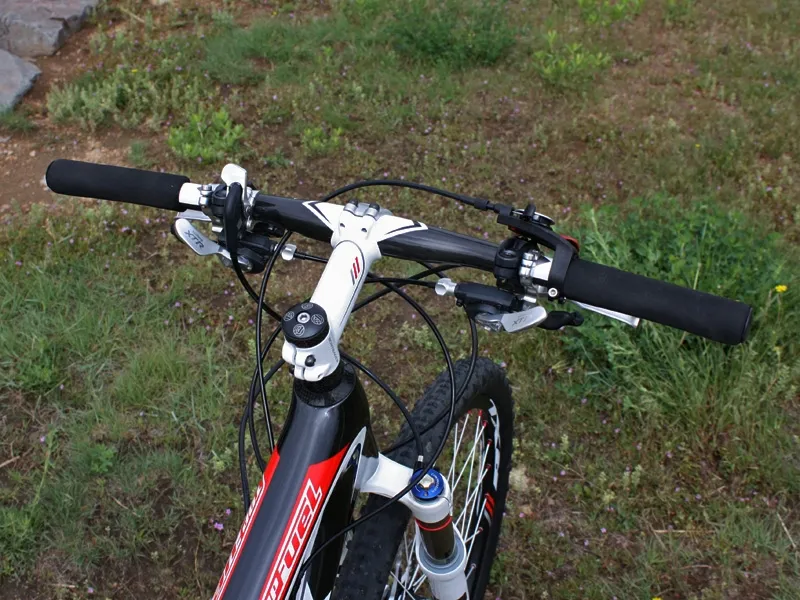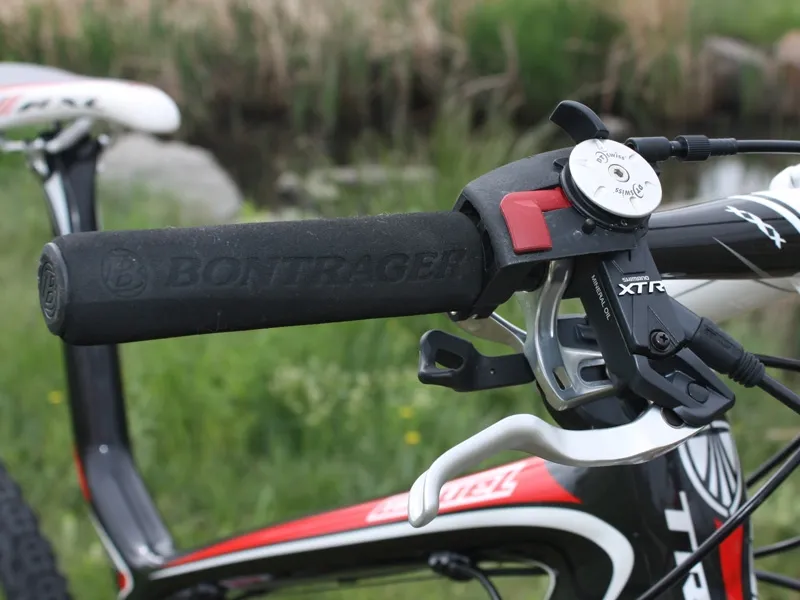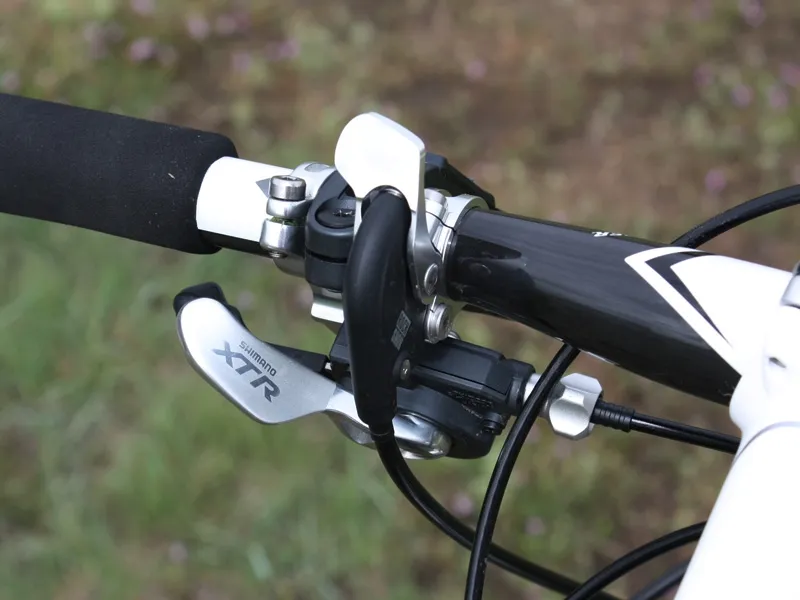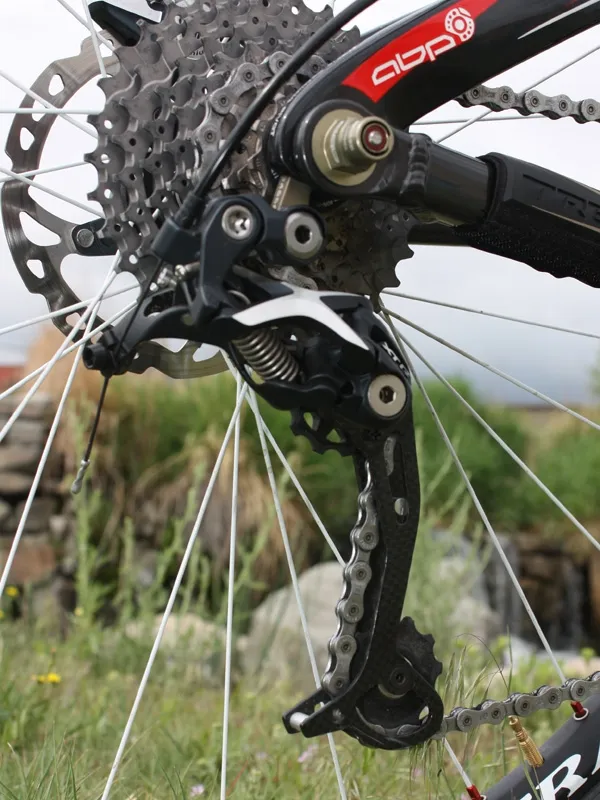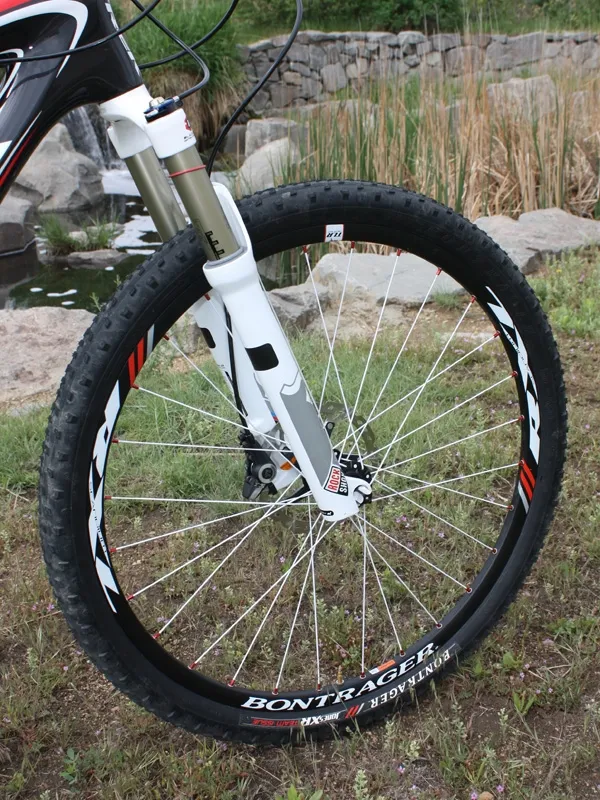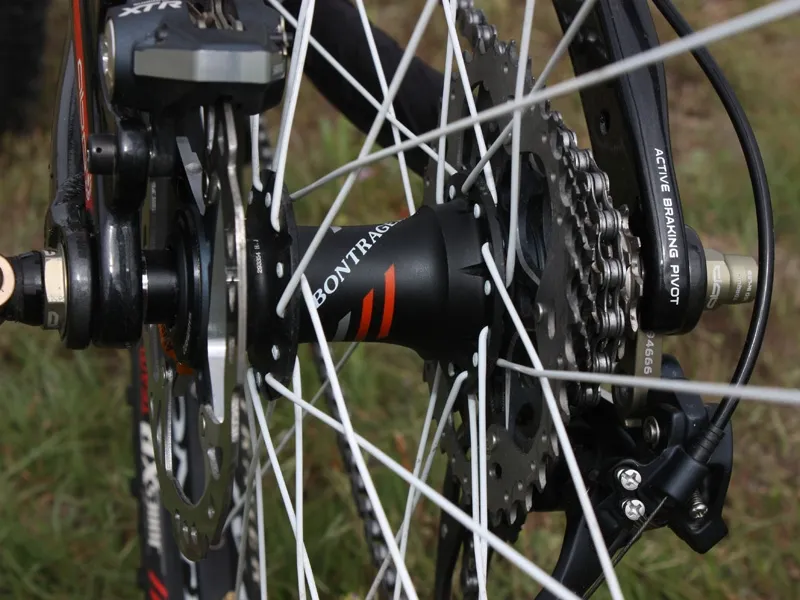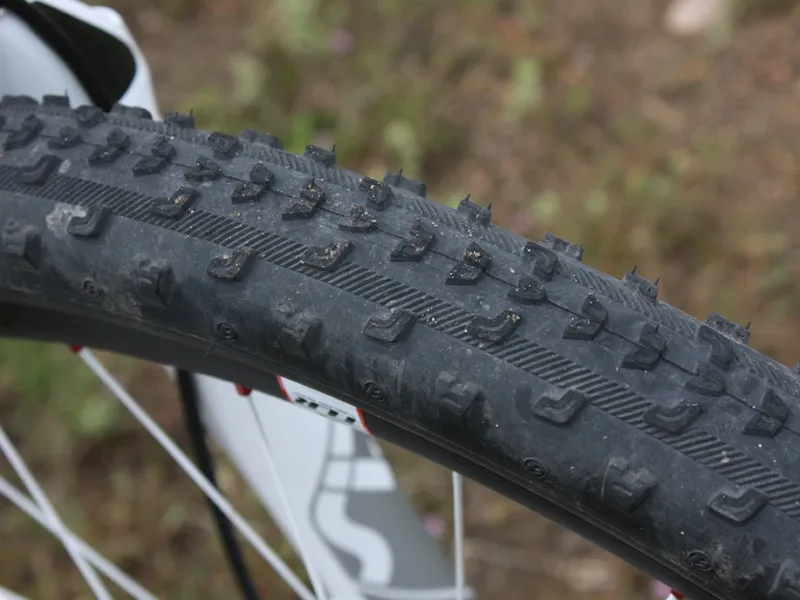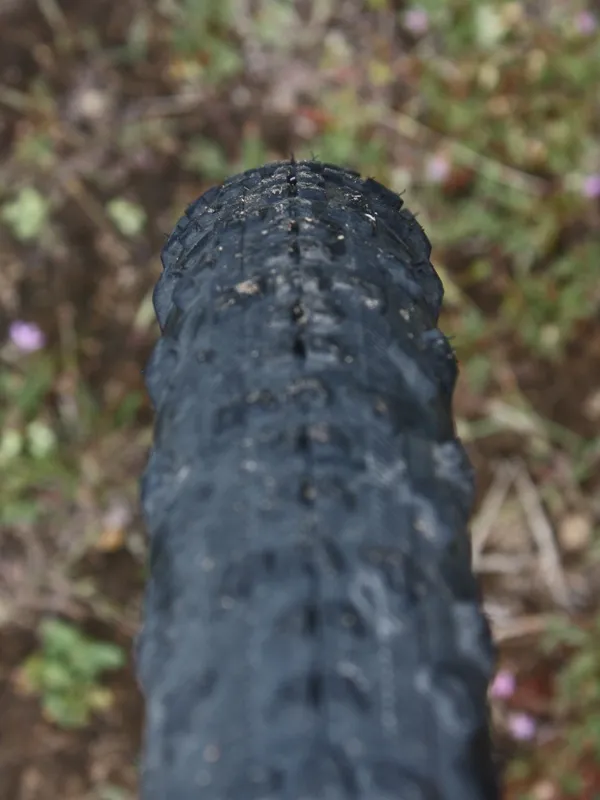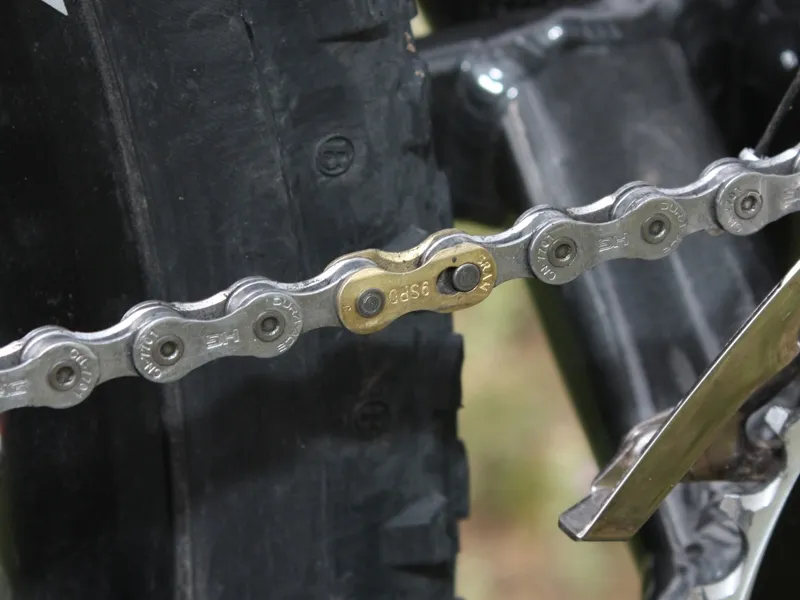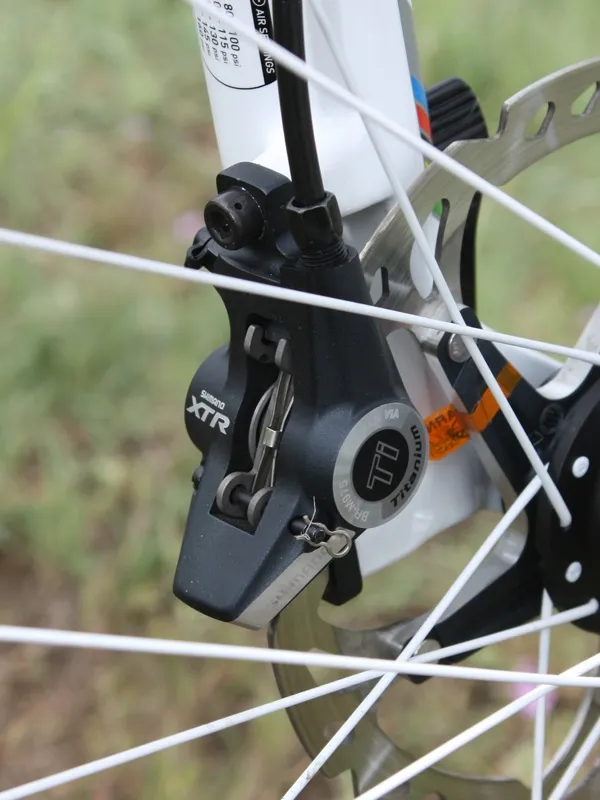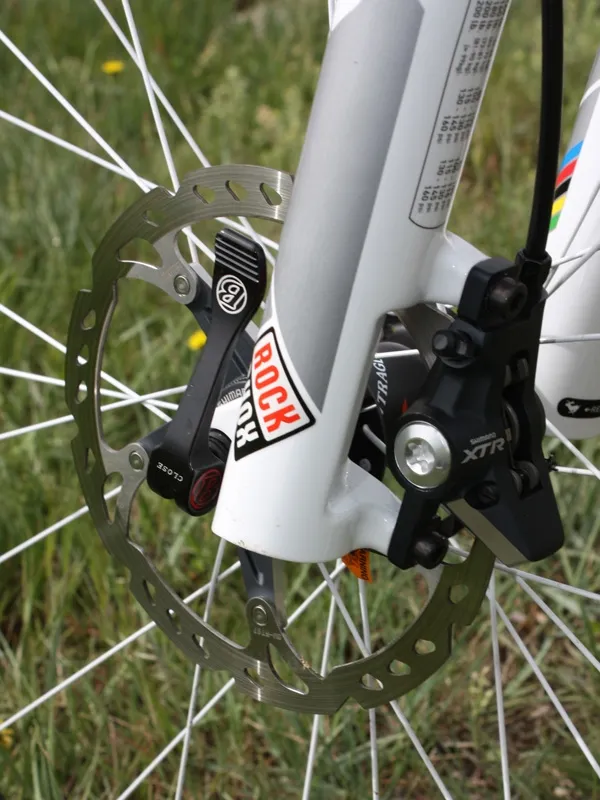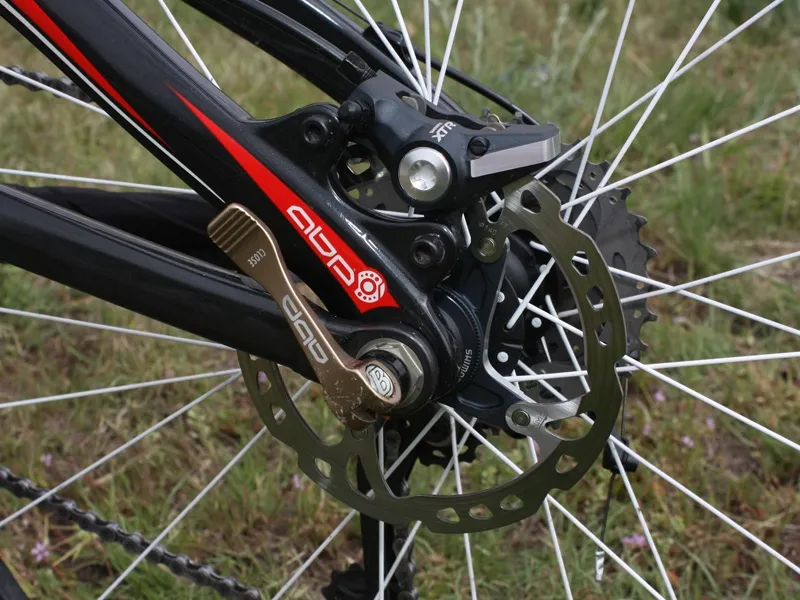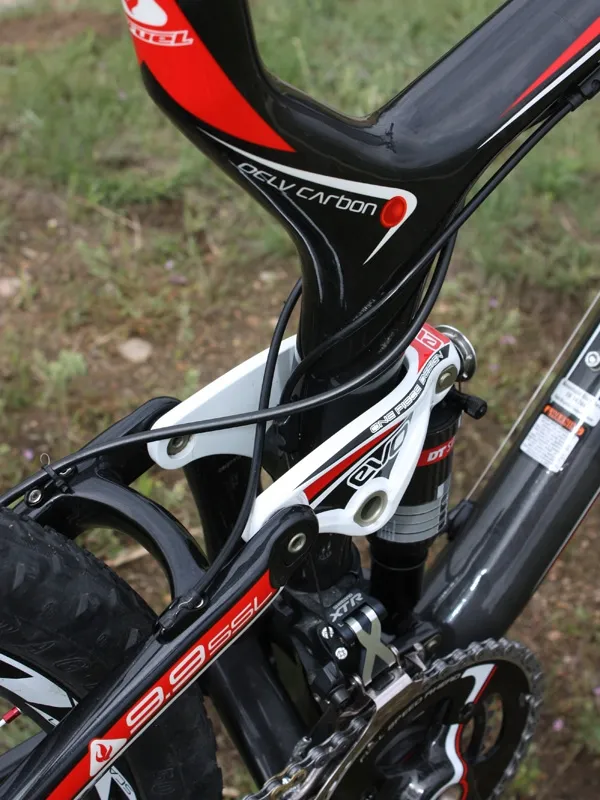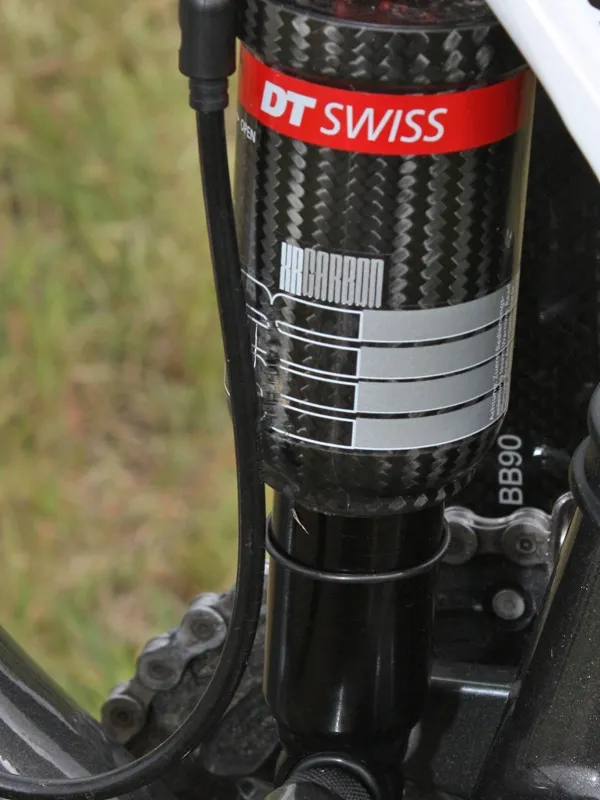We were impressed when we first tested Trek's cross-country full-suspension flagship at the Interbike show in Las Vegas last year. Now we've had time to put in some more miles on the Top Fuel 9.9 SSL – on both an early prototype and a full-blown production model – we have a clearer picture of its capabilities.
It's a bike that hits the target of what a premium-level cross-country race bike should be squarely in its centre, yet it's also capable of more with a few component tweaks and in the hands of a skilled rider. It's oh-so-close to perfection.
Ride & handling: Superlight race rig with Trek's best suspension design yet
The premium build on our top-end 9.9 SSL test model keeps total weight at an impressive 9.81kg (21.63lb) – well in keeping with the competition and lighter than most people's hardtails.
Naturally, the low mass is a boon when ascending and anyone who believes dropping a kilo or two doesn't make much difference in the real world has probably never ridden anything so feathery.
The lack of weight is noticeable, especially on steeper and more technical climbs, and any racer will quickly extol the virtues of cresting the opening climb with a few seconds' (or minutes') advantage over their rivals. Game on.
The Full Floater suspension is fairly supple off the top yet wholly composed on bigger hits, with superb bottom-out control. There is no mid-stroke wallow, and the whole package is generally very composed and well controlled – Trek's best short-travel suspension design by a long way.
Cost issues aside, hardcore racers will be hard pressed to find a more complete and purpose-built pure cross-country competition package. The £4,499.99 price tag is too much for most people to swallow, but the £3,149.99 (US$4,949.99) Top Fuel 9.8 provides nearly all of the performance with a bit of extra weight and without the novel two-ring crankset. Less expensive aluminium models are available, too.
Regardless, one shouldn't pigeonhole the Top Fuel 9.9 SSL as only a race bike. Slap on a wider low-rise bar, an 11-34T cassette and some fatter rubber and you've got a decent trail bike for smooth riders who value a superlight rig.
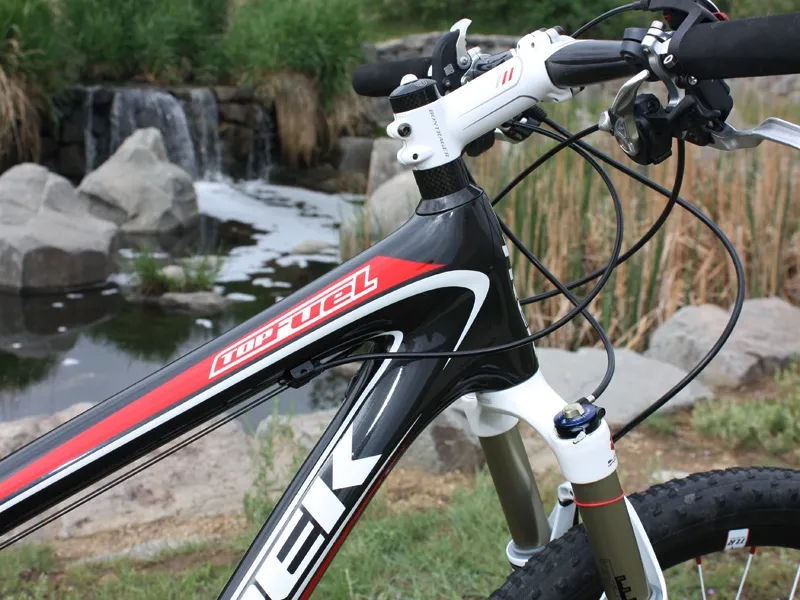
Frame: Light, fairly rigid and angles are spot-on, plus unusual integrated seatmast
Frame weight is just 1,950g (4.30lb) – with shock – thanks to a generous helping of Trek's top-shelf OCLV Red carbon fibre technology, full alloy pivot hardware and an all-carbon integrated bottom bracket assembly borrowed from the road-going Madone.
In addition to the grams saved by eliminating the threaded metallic cups, the bottom bracket itself is now lighter as the two cartridge bearings are inserted directly into the precision moulded shell along with a couple of seals and a plastic sleeve in between.
The basic suspension layout hasn't changed drastically since the Fuel's introduction roughly a decade ago but Trek's engineers have massaged the new 100mm configuration so thoroughly as to be practically unrecognisable on the trail. If ever there was an argument that good bicycle rear suspension design is a game of millimetres, this is it.
The well-placed main pivot provides mostly neutral pedaling response (at least when you're not in the big ring) and the asymmetrical aluminium chainstays, stout carbon seatstays, and meaty one-piece EVO forged magnesium rocker link do an excellent job of limiting rear wheel movement to the intended plane even in rocky technical terrain.
The Trek-exclusive Active Braking Pivot concept at the rear dropouts is surprisingly effective even in this shorter-travel application. Dive hot into a washboarded corner with the rear brake applied and you're treated to minimal skidding or skipping and better traction for a faster exit.
Most impressive, however, is the Full Floater concept whereby both ends of the shock are anchored to dynamic links – at the end of the rocker link up top and on an extension of the chainstays below – for more precise control of suspension leverage ratios throughout the range of travel.
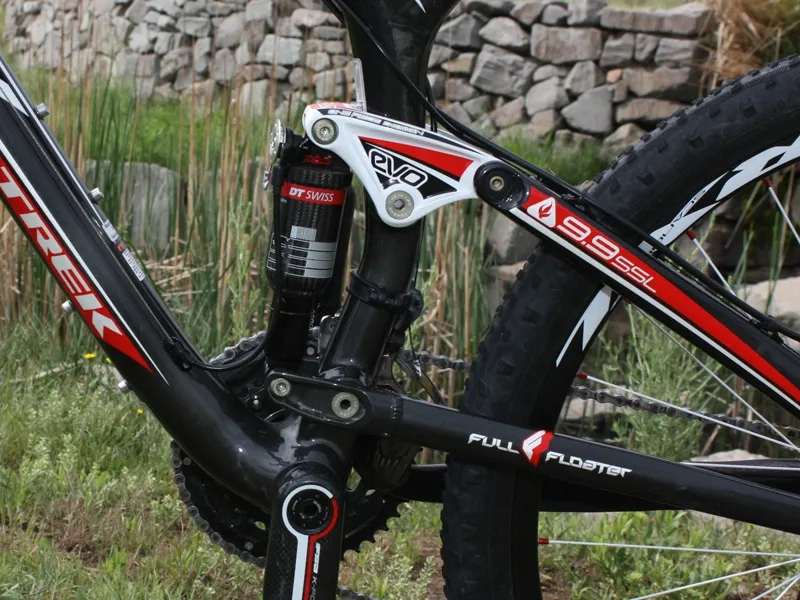
Overall chassis rigidity belies the paltry weight with very good pedaling response, a relatively tight front end and an overall personality that just feels fast under power.
The down tube takes full advantage of the bottom bracket shell's 90mm width, the top and down tubes are pushed right up to the edges of the integrated head tube, and the top tube is fairly broad throughout its length.
Front triangle torsional rigidity is very good overall but still seems a half step behind other featherweights such as the Scott Spark – we noticed some off-axis twang when careening through rock gardens – but the Top Fuel's rear suspension performance is better overall.
In this application, light trumps stiff but if you can have 'light and still pretty stiff' coupled with an extra capable rear end, well then that's all the better.
Handling is appropriately quick and well sorted, with a 70-degree head tube angle and a relatively low 32.7cm (12.9in) bottom bracket height perfect for railing corners.
The integrated seatmast – 'semi-integrated' would be more accurate seeing as how there are no hacksaws involved and you still have a conventionally telescoping, though stubby, seatpost up top – is a step or two off the beaten path.
Though this saves some weight its greatest benefit is the remarkable amount of fore-aft give that is engineered into the design. It's probably best not to attempt a nasty flat landing with your rear end firmly planted on the saddle but the flex noticeably adds to the Top Fuel's buttery feel – and can also make the bike feel a bit bouncy if the rear shock is locked out.
We can't help but wonder if Trek could have achieved a similar effect with a standard 31.6mm-diameter post instead of the proprietary extra-fatso 34.0mm one though, and you have to deal with the usual integrated mast drawbacks. Frequent-flier racers should be prepared to disassemble the Top Fuel a bit more than necessary to fit it in a travel case.
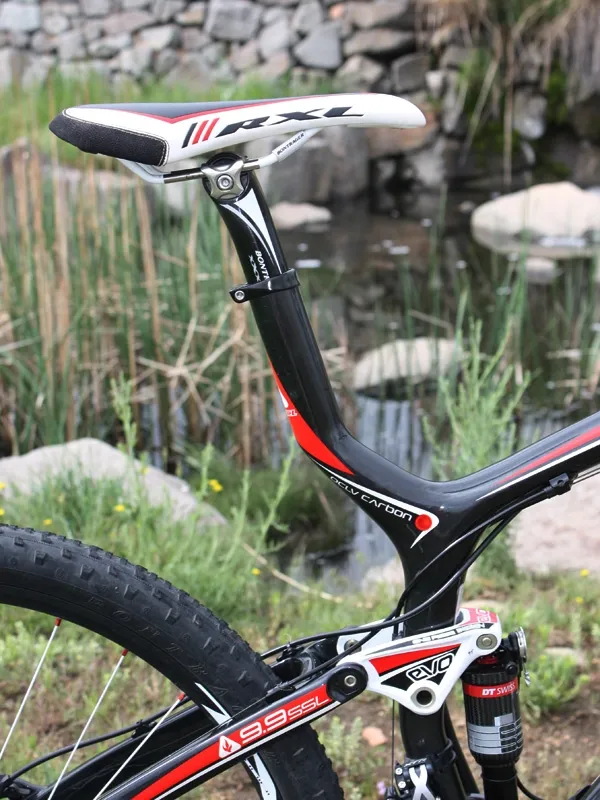
Equipment: Great spec for World Cups, not so good down the trail centre
Trek's all-out commitment to making the Top Fuel a race bike is evident in a few component choices that might work well on a World Cup course but limit the bike's versatility in the real world.
The narrower crank makes for a noticeable difference in pedalling mechanics but Trek pair the 29T inner ring with an 11-32T Shimano XTR cassette. Trek say this is a result of racer feedback and that an 11-34T would add 20g, but we say the wider range's very marginal penalty would be well worth it to the people who will actually be buying this thing.
Likewise, we understand that many World Cup racers still opt for narrow flat bars – the Bontrager Race XXX Lite here measures just 580mm across – but bar ends are therefore a virtual necessity and they aren't included. A flat bar with more width would make more sense as that would give buyers more freedom to choose without spending yet more money.
The Bontrager Race XXX Lite foam grips should be scrapped right from the get-go. They rotate and migrate over time, the foam is too soft to provide any useful cushioning and they're not particularly grippy either.
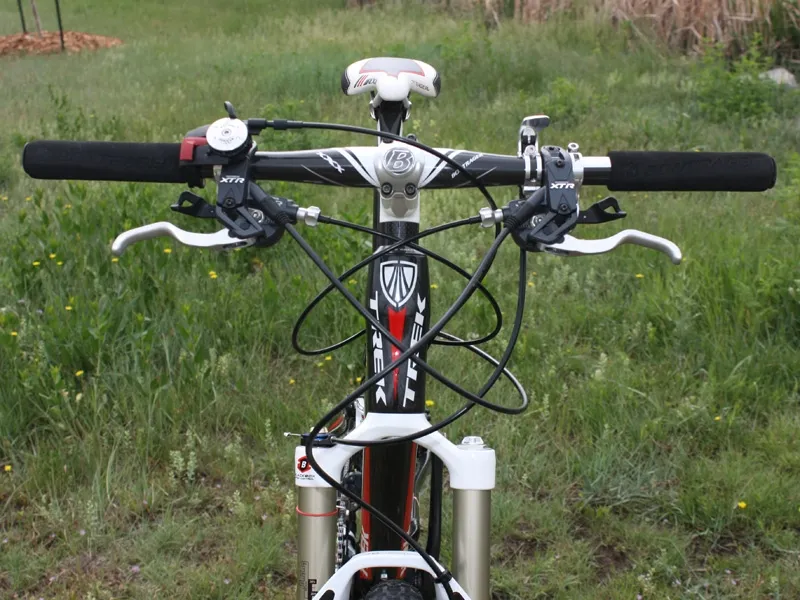
In spite of appearances, the stock Bontrager Jones XR Team Issue tyres provide surprisingly decent grip on hardpack, rock and good old-fashioned dirt, and the ultra-low profile knobs roll insanely fast on anything short of roofing tar.
Loose conditions are a definite no-no, however, and cornering in general is an exercise in slide control as the overly rounded profile has almost no shoulder to lean on. Moreover, the narrow width virtually demands that they be run tubeless, but again Trek don't include the easily installed kit in the Top Fuel 9.9 SSL's asking price.
Trek wrap those tyres around their new Bontrager Race X Lite Disc wheelset, which includes light scandium-alloy clincher rims, butted stainless steel DT Swiss spokes and new designed-in-house hubs that replace the previous DT Swiss units.
Our rear hub bearings have quickly grown rough and the freehub body occasionally protested with a loud 'pop' under power – something Trek attribute to an overly abundant grease fill from the factory, which might explain the popping but not the bearings.
The RockShox SID World Cup fork continues to impress, with excellent suspension control throughout the 100mm range and very good steering accuracy.
Out back, the Fox Racing Shox RP23 rear shock on our first prototype offered noticeably better traction and a suppler ride than the DT Swss XR Carbon unit of our later production tester.
Trek say racers prefer the latter's firmer lockout and available remote – fair enough, but be prepared for the hit in small bump compliance and the lack of a lockout blowoff threshold as a result.
As for the XTR trigger shifter, derailleurs and dual hydraulic disc brakes – with 160mm front/140mm rear Center Lock rotors – there's not much to say. The whole lot worked flawlessly and Shimano seem to have expelled the sticky piston demons that once plagued the brake callipers.
Shift quality was smooth and precise and the brakes provided the usual stellar levels of modulation, albeit still with not quite as much power as we'd like.
